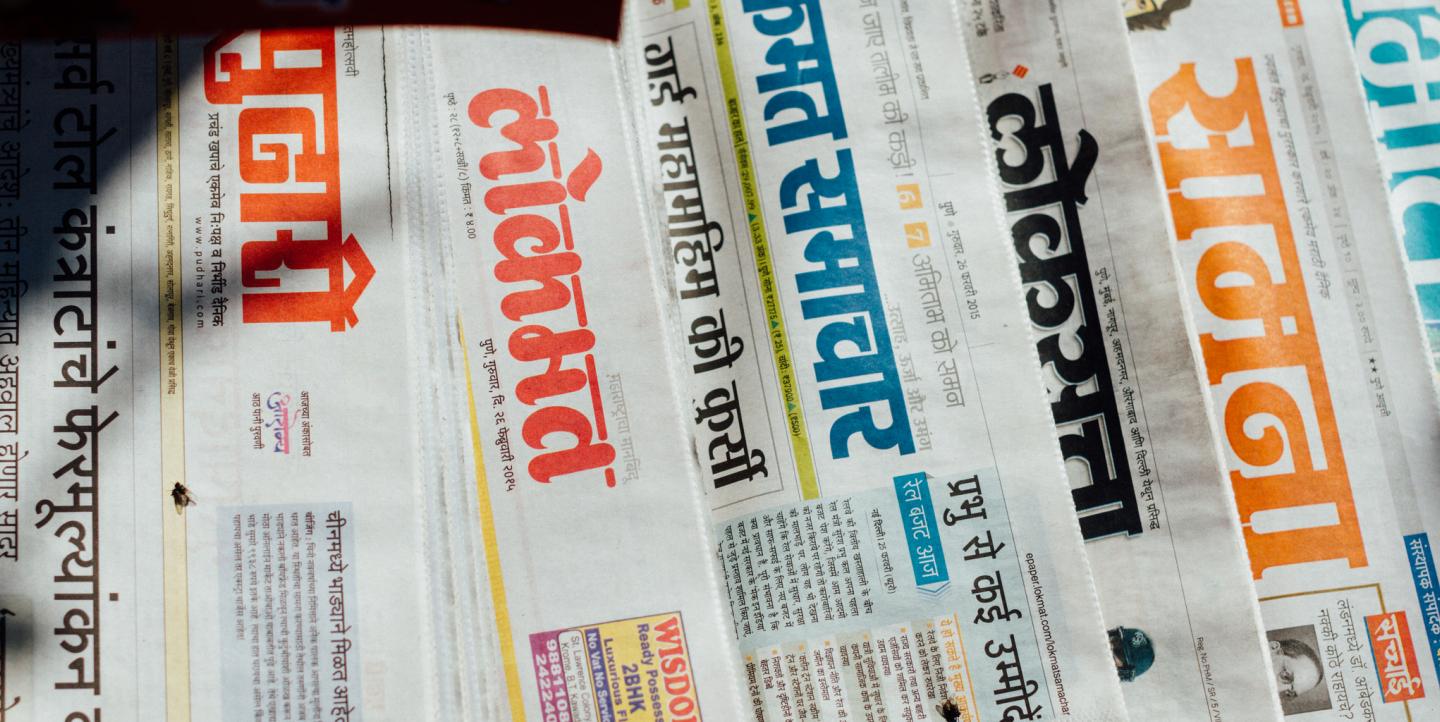Vigilante mobs beat several men to death in separate incidents in the central Indian state of Jharkhand this past May. The violence was incited in part by rumors circulating on WhatsApp that strangers were abducting children, rumors that were fabricated.
In a country where rural mobile internet use grew 26 percent, compared to nine percent growth in urban areas, according to latest available figures from the Internet and Mobile Association of India and market research firm IMRB, social mobile apps like Facebook and WhatsApp are perfect vectors for misinformation targeted at the millions of people getting news online, on their phones, for the first time.
Quashing misinformation in this environment may feel like playing whack-a-mole, but the six-month-old Alt News is throwing its three-person operation behind the cause, trying to debunk popular rumors and sniff out the creators of fake news articles, with an eye in particular toward what it sees as political propaganda. The site passed 3.5 million visitors and 5 million pageviews in half a year and now has 56,000 followers on its Facebook page — still peanuts, Alt News cofounder Pratik Sinha acknowledged, given the total population of India. But Alt News has politicians and other influential institutions in its crosshairs.
“The impact we’ve made has been noticeable on people in powerful positions, whether it’s politicians or mainstream media,” he said. “We’ve opened them up, to see that you can’t ignore this, and that’s a good first step.” Some of the largest news publishers in India, often conservative about linking out to other publications, have begun to link to and republish Alt News pieces. Other publications have retracted pieces that were picked apart by Alt News (though some approach corrections as quietly as possible).
Alt News is currently made up of Sinha, a former engineer who left his job at the end of last year; another cofounder, the anonymous person behind the popular parody Facebook page Unofficial Sususwamy; and a third anonymous writer, by the pen name of Sam Jawed, who’s been writing about media and propaganda for a long time. The team debunks fake stories on topics ranging from politics to religion to science and cultural issues, and writes voice-y pushbacks (here’s a recent one unraveling a viral post that attacked the murdered journalist Gauri Lankesh). In addition to Facebook and Twitter, it sends out posts through WhatsApp via a broadcast list.
The site is currently majority English, though it sporadically publishes posts in Hindi, and is looking to build out its Hindi-language section. Most of the work Alt News does is forensic dissection of the traces left by fake news creators online, frequently including material that circulates in Hindi.
Sinha pointed me to one popular website called Hindutva.info, behind many of the viral faked or misleading videos and articles Alt News comes across on social media. Sinha used Wayback Machine to find some iterations of the site shortly after the domain was registered and found several author names to go on. Alt News published the entire unmasking process in detail, found videos of the creator bragging about the money he makes through companies like Google Adsense and Revcontent, and connected him to more than a dozen popular Facebook pages posting Hindutva.info articles (some of which have since been removed).
“It’s very easy to spread fake news under cloak of anonymity, and there are websites that are spreading fake news and videos that could potentially lead to riots,” Sinha said. “We’re able to put information out there so that next time, somebody who’s been affected by fake news, whether directly or indirectly — if they, say, want to approach law enforcement, they might have some details to share.”
Alt News uses the term “fake news” liberally in its posts, so I asked Sinha what his working definition of the term was. His classification, he said, falls into several buckets of popular tactics: Fake videos creatively edited to twist a public figure’s statements; unrelated old videos introduced to foreground and inflame tensions between Hindus and Muslims; seemingly innocuous fake Facebook pages for celebrities that sprout up that are used to spread fake news articles. He says he’s spoken to young people, some still in high school, who’ve set up fake sites that rake in as much as INR20 to INR40,000 per month (upwards of US$600 per month).
“Credibility is not an issue for them. You’ve figured out how to tame Facebook, you create pages, you put out something you know will go viral,” Sinha said. “And how many people are reading Alt News? A small fraction. Only when you tell people repeatedly, ‘this is fake,’ ‘this is fake,’ then maybe after the tenth time, when they forward something on WhatsApp or somewhere else without thinking twice — maybe they’ll start thinking, ‘I forwarded 10 items that were fake. Maybe I’ll think again before the eleventh.”
This post originally appeared on Nieman Lab and is condensed and republished on IJNet with permission.
Main image CC-licensed by Flickr via Adam Cohn.

